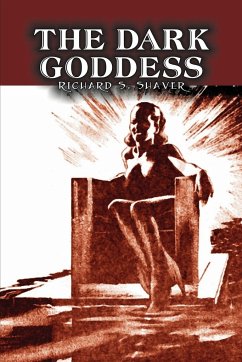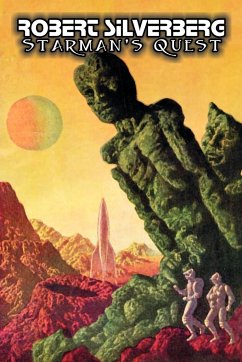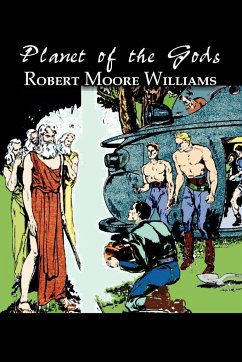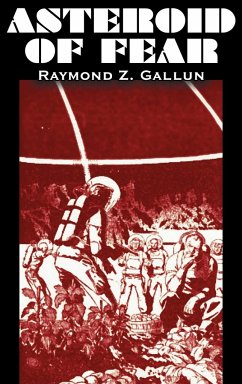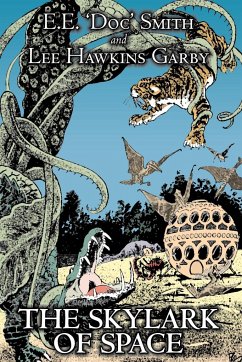
The Dark Goddess by Richard S. Shaver, Science Fiction, Adventure, Fantasy

PAYBACK Punkte
10 °P sammeln!
The black-emerald water swirled and broke in many silver gleamings. From the misty center of the pool rose a vast but beautiful head. The long dripping hair was not hair, but had a rippling life of its own. The great lonely eyes and wide scarlet mouth were far more lovely than any human's. The gleaming green shoulders and shapely long arms ended in graceful webbed fingers. The red tipped breasts were proud, naked mounts where beauty lived forever. The pillaring waist-the strong-arched hips that did not divide into legs but into two great serpentine drivers-ended in the wide tail fins of a fish...
The black-emerald water swirled and broke in many silver gleamings. From the misty center of the pool rose a vast but beautiful head. The long dripping hair was not hair, but had a rippling life of its own. The great lonely eyes and wide scarlet mouth were far more lovely than any human's. The gleaming green shoulders and shapely long arms ended in graceful webbed fingers. The red tipped breasts were proud, naked mounts where beauty lived forever. The pillaring waist-the strong-arched hips that did not divide into legs but into two great serpentine drivers-ended in the wide tail fins of a fish. The dark sea-scented lapping green water was circled by tiers of marble seats, where many human people sat, their eyes upon the throne-seat into which the tremendous female figure vaulted in one powerful thrust from the water, as a tall wave uncurls effortlessly upon a golden beach.





